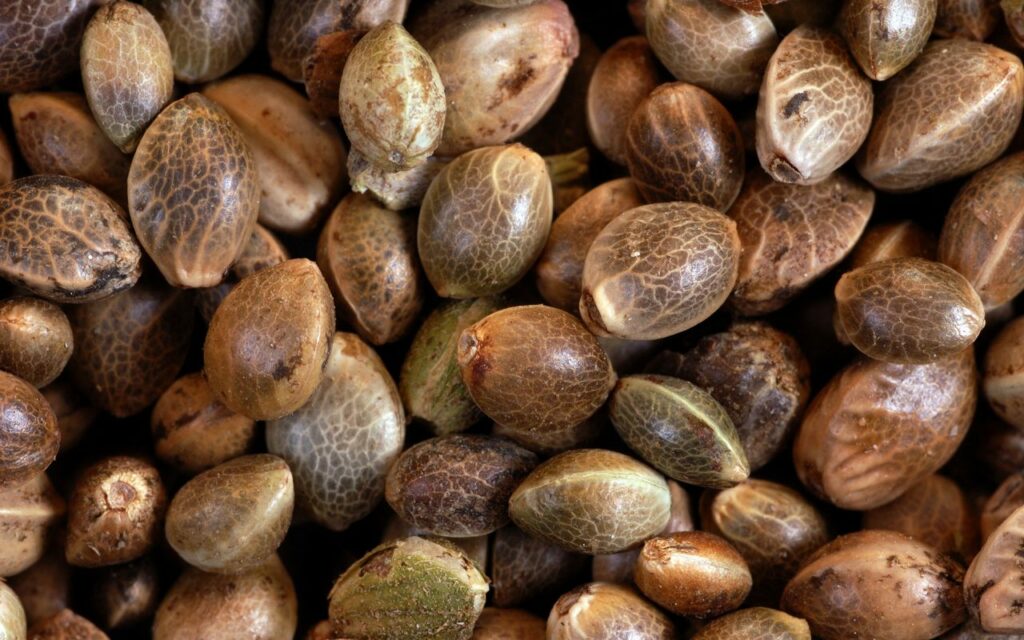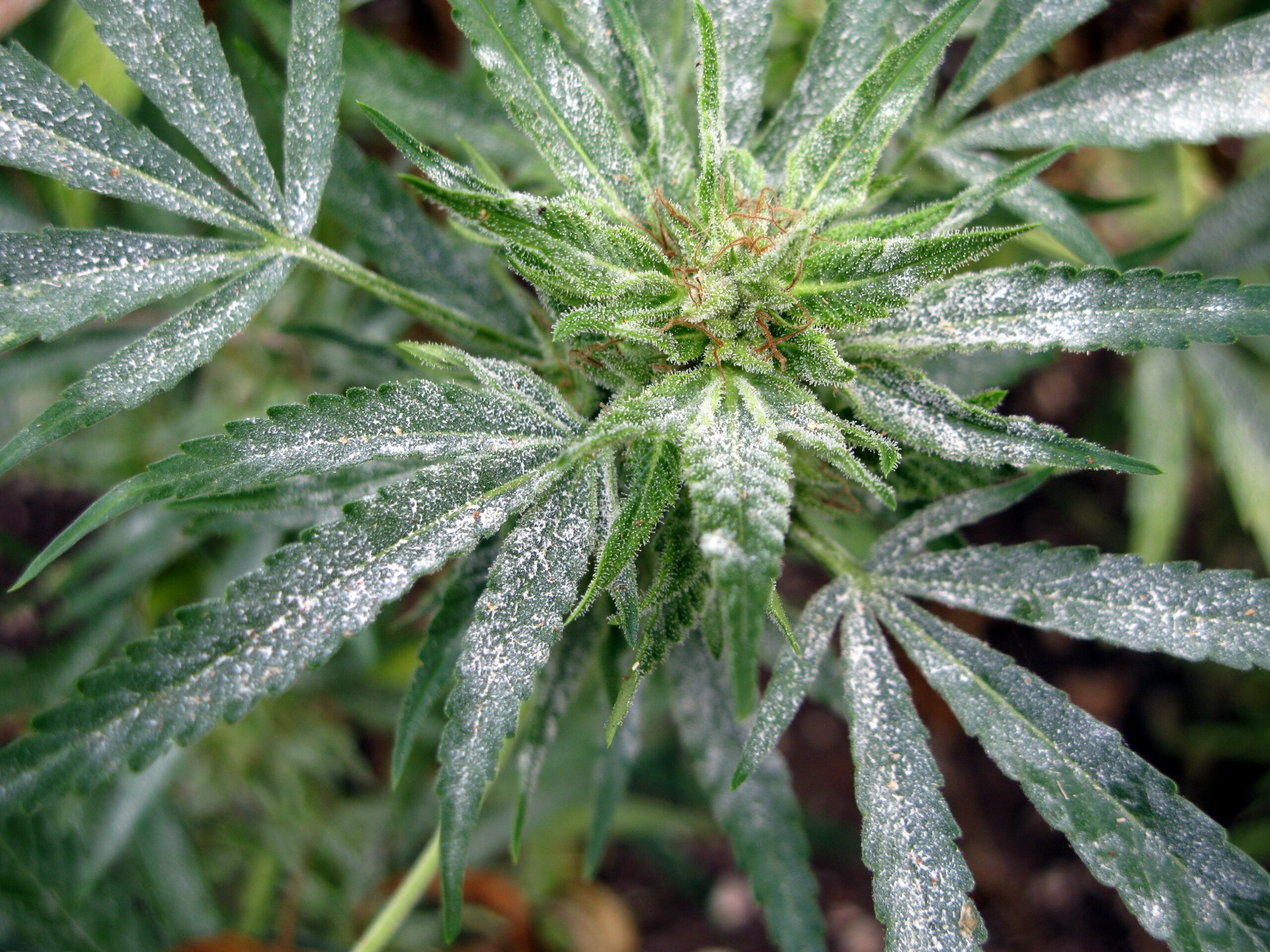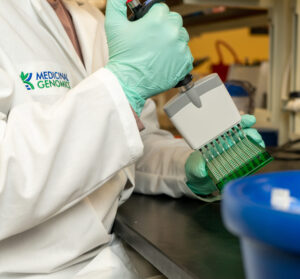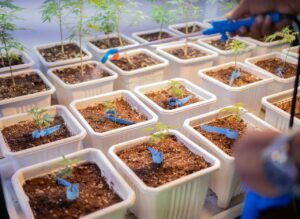Cannabis growers are divided when it comes to powdery mildew, one of the plant’s most notorious pathogens. In one camp, there are those who believe PM is a systemic pathogen that permeates via the plant’s vascular system. Others believe is it superficial pest that spreads across the plant’s surface?
It turns out, there is a good reason for the debate. Based on the available literature and the tests we have conducted at Medicinal Genomics, it’s not clear whether PM is systemic. The science is still out. But here is what we know so far.
The Powdery Mildew that infects Cannabis is a novel organism
The powdery mildew species that infects cannabis is a different organism than the organism that infects other plants, such as tomatoes or cucumbers.
We genetically sequencing infected cannabis plants from the United States and Canada and found that the DNA didn’t match any known PM sequences. Further complicating things is the possibility that there could be more than one PM species infecting cannabis, but we would need to collect more samples from Europe and Asia in order to sort that out.
There has been no published research into how this novel PM organism infects the cannabis plant. For now, the best we can do is look to studies on how other PM species infect other plants for clues. However, until similar studies are conducted on cannabis, we can’t be sure how the pathogen behaves.
Powdery mildew can create an invisible network before spores are visible
Powdery mildew is an obligate biotroph, which is a fancy way of saying it cannot survive without taking nutrients from a host. A 2012 study showed how the Golovinomyces orontii species of PM does just that. After dying an infected leaf, the researchers observed that spores penetrate the leaf and the cell wall with a taproot called a haustorium, which serves as its primary feeding mechanism. The pathogen then forms secondary taproots into neighboring cells, creating a mycelium network over a period of several days before producing the tell-tale white powder.
Again, it’s important to note that Golovinomyces orontii is not the same organism that infects cannabis. However, we have designed test that can detect the unique DNA signature of the PM species that infects cannabis from a 4mm leaf punch. In fact, our Powdery Mildew detection assays can detect powdery mildew DNA from cannabis leaves that show no visual signs. This suggests that we are detecting the DNA from the mycelium network that the pathogen creates prior to sporulation. This early detection can be useful to growers who can remove and quarantine infected plants so they do not further infect the grow room.
Powdery Mildew can be detected elsewhere in an infected plant
If powdery mildew penetrates the plant, the next question is whether it gets into the plant’s vasculature and infects other parts of the plant. There is no published literature that supports that theory, and it is likely the mycelium network is made externally.
However, we collected four samples from visually clean leaves off a plant that had visual PM elsewhere on the plant. Of those four samples, three tested positive. This does not prove the theory that PM can travel through the plant’s vascular system. It could be that the other parts of the plant were infected by a separate event. It may also be that some powdery mildew DNA gets into the plant’s bloodstream when the haustorium penetrates the plant. In any case, it is a topic that warrants further study.
Cannabis can be bred for powdery mildew resistance

Powdery mildew does not affect all cannabis varieties equally. Some varieties of cannabis are resistant, while others are very susceptible to the pathogen. We also believe that PM resistance is not binary. In hops, we have seen there are lines that are partially resistant.
In any case, PM resistance is a trait that can be selected. Using early detection technology, such as the Powdery Mildew assay, growers can screen plants for infection before visual signs are present. By continuing to screen for PM infection, and selecting against plants that test positive, breeders will enrich their resistance.
Conclusions
As you can see, there is still much to be learned about powdery mildew on cannabis. As with most plant pathogens, the best defense is prevention. This can be done with strict environmental controls, periodic screenings of grow rooms, and screening of incoming clones. The latter two can be done using the Powdery Mildew detection assay.
For even more information about PM, check out the episode of the Shaping Fire podcast where our CSO, Kevin McKernan, talks all about PM and another hated cannabis pathogen: botrytis.

Further Reading
Hemp Diseases and Pests book by McPartland, Clarke and Watson








